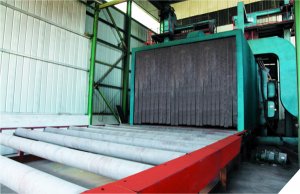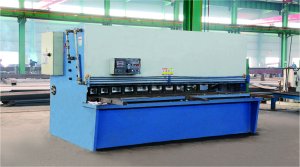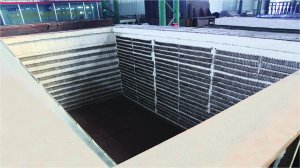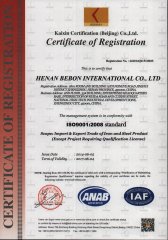Copper alloys have played a significant role in human civilization for thousands of years, owing to their unique combination of properties, including conductivity, corrosion resistance, malleability, and aesthetic appeal. From ancient civilizations to modern industries, copper alloys have been instrumental in shaping our world and advancing technological progress.
The use of copper dates back to ancient times, with evidence of its utilization by early civilizations such as the Mesopotamians, Egyptians, and Indus Valley inhabitants. The discovery of smelting techniques enabled the extraction of copper from ores, paving the way for its widespread use in tools, weapons, and decorative artifacts.Over time, humans discovered that by alloying copper with other metals, such as tin, zinc, and nickel, they could enhance its mechanical properties and expand its range of applications. The Bronze Age, characterized by the widespread use of copper-tin alloys (bronze), marked a significant milestone in human history, ushering in an era of technological innovation and cultural development.In subsequent centuries, copper alloys continued to play a vital role in various civilizations, from the Greek and Roman empires to the Renaissance era and beyond. The advent of industrialization in the 19th century led to the development of new copper alloys and manufacturing processes, further expanding their utility in modern society.
Copper alloys are renowned for their excellent electrical and thermal conductivity, making them indispensable materials in electrical engineering, electronics, and heat exchange applications. Copper's high conductivity allows for efficient transmission of electricity and heat, minimizing energy loss and maximizing performance in electrical conductors and heat exchangers.Many copper alloys exhibit exceptional corrosion resistance, particularly in aqueous environments, due to the formation of a protective oxide layer on their surface. This inherent resistance to corrosion makes copper alloys suitable for use in marine environments, plumbing systems, and architectural applications where exposure to moisture and aggressive chemicals is common.Copper alloys are highly malleable and ductile, allowing them to be easily formed, shaped, and fabricated into intricate designs and structures. This property makes copper alloys ideal for architectural ornamentation, artistic sculptures, and intricate metalwork, where aesthetic appeal and design flexibility are paramount.Copper and certain copper alloys possess natural antimicrobial properties, making them effective agents for inhibiting the growth of bacteria, viruses, and fungi on surfaces. This unique attribute has led to the use of copper alloys in healthcare settings, antimicrobial coatings, and touch surfaces to reduce the risk of healthcare-associated infections.Copper alloys are prized for their distinctive color, luster, and patina, which evolve over time through natural oxidation and weathering processes. The warm tones and rich hues of copper alloys, ranging from reddish-brown to greenish-blue, add a touch of elegance and character to architectural facades, interior decor, and artistic creations.
Copper alloys are widely used in electrical and electronic applications, including wiring, connectors, circuit boards, and electrical contacts. The high conductivity and reliability of copper alloys ensure efficient transmission of electricity and signal integrity in electronic devices, telecommunications systems, and power distribution networks.Copper alloys, particularly copper-nickel alloys, are commonly employed in plumbing and HVAC (heating, ventilation, and air conditioning) systems due to their corrosion resistance and durability. Copper pipes, fittings, and heat exchangers provide reliable performance and long-term service in residential, commercial, and industrial applications.Copper alloys have a long history of use in architectural applications, including roofing, cladding, facades, and decorative elements. Copper's aesthetic appeal, durability, and weathering characteristics make it a preferred choice for enhancing the visual appeal and longevity of buildings, monuments, and landmarks.Copper-nickel alloys, known for their exceptional corrosion resistance in seawater, are extensively utilized in marine and offshore engineering applications. Components such as ship hulls, propellers, valves, and heat exchangers benefit from the corrosion resistance and biofouling resistance of copper-nickel alloys, ensuring long-term reliability in harsh marine environments.Copper alloys with antimicrobial properties find applications in healthcare settings for surfaces, fixtures, and medical devices aimed at reducing the transmission of pathogens and healthcare-associated infections. Copper surfaces, antimicrobial coatings, and copper-infused textiles contribute to improved hygiene and infection control in hospitals, clinics, and public spaces.
Copper alloys offer exceptional reliability and durability, with long service lives and minimal maintenance requirements in a wide range of applications. Their resistance to corrosion, fatigue, and wear ensures consistent performance and structural integrity over extended periods of use.
The high conductivity of copper alloys translates to improved efficiency and performance in electrical, thermal, and fluid transfer applications. From power transmission and heat exchange to fluid flow and signal transmission, copper alloys enable optimal performance and energy efficiency in various systems and devices.Copper alloys are environmentally friendly materials that can be recycled indefinitely without losing their properties or performance. Recycling copper alloys reduces the demand for virgin materials, conserves natural resources, and minimizes the environmental impact of manufacturing processes, making them a sustainable choice for eco-conscious industries.Copper alloys exhibit versatility and adaptability in terms of their mechanical properties, fabrication methods, and surface finishes. Whether it's shaping, machining, welding, or finishing, copper alloys can be tailored to meet specific design requirements and performance criteria in diverse applications and industries.
While copper alloys offer numerous benefits, they can be relatively expensive compared to other materials such as steel or aluminum. Fluctuations in metal prices and availability of raw materials may impact the cost-effectiveness of copper alloy products, particularly in industries with stringent budget constraints.Proper material selection is essential when choosing copper alloys for specific applications, taking into account factors such as mechanical properties, corrosion resistance, and compatibility with other materials. Consideration must be given to the environment, operating conditions, and potential interactions with chemicals or contaminants to ensure optimal performance and longevity.Joining and fabrication of copper alloys require specialized techniques and equipment due to their unique properties, including high conductivity, thermal expansion, and sensitivity to heat. Welding, brazing, and soldering processes must be carefully controlled to prevent defects, distortion, or metallurgical changes that could compromise the integrity of the components.Surface treatment and maintenance of copper alloys are important considerations to enhance their performance, appearance, and longevity. Protective coatings, corrosion inhibitors, and surface finishes can be applied to copper alloys to improve their resistance to tarnishing, oxidation, and environmental degradation, ensuring they remain functional and aesthetically pleasing over time.
Ongoing research and development efforts focus on advancing the properties and performance of copper alloys through alloy design, microstructure control, and processing techniques. Innovations in metallurgy, nanotechnology, and additive manufacturing aim to create new generations of copper alloys with enhanced strength, conductivity, and sustainability for emerging applications.Integration of smart and functional features into copper alloys opens up new possibilities for multifunctional materials with sensing, actuating, and self-healing capabilities. Smart coatings, shape memory alloys, and nanocomposites enable innovative solutions for energy harvesting, sensing devices, and adaptive structures in various industries.
Copper alloys hold promise for biomedical and biotechnological applications, including implants, drug delivery systems, and tissue engineering scaffolds. Advances in surface modification, biofunctionalization, and biocompatibility testing enable the development of copper-based materials for regenerative medicine, biosensing, and antimicrobial therapy.The adoption of sustainable manufacturing practices, such as recycling, resource efficiency, and waste reduction, contributes to the environmental sustainability of copper alloy production and processing. Closed-loop recycling systems, green chemistry approaches, and renewable energy sources minimize the ecological footprint of copper alloy manufacturing, aligning with global efforts to achieve a circular economy.
Copper alloys embody a rich legacy of human innovation and craftsmanship, spanning millennia of cultural, technological, and industrial evolution. From ancient civilizations to modern societies, copper alloys have left an indelible mark on human history, shaping our built environment, technological infrastructure, and artistic expression. As we continue to unlock the potential of copper alloys through research, innovation, and sustainable practices, their role in advancing human progress and addressing global challenges remains as relevant and indispensable as ever.

 Address:Zhengzhou city in China.
Address:Zhengzhou city in China. Phone:0086-371-86151827
Phone:0086-371-86151827 Email:
Email:



 Address: Zhengzhou city in China.
Address: Zhengzhou city in China.


